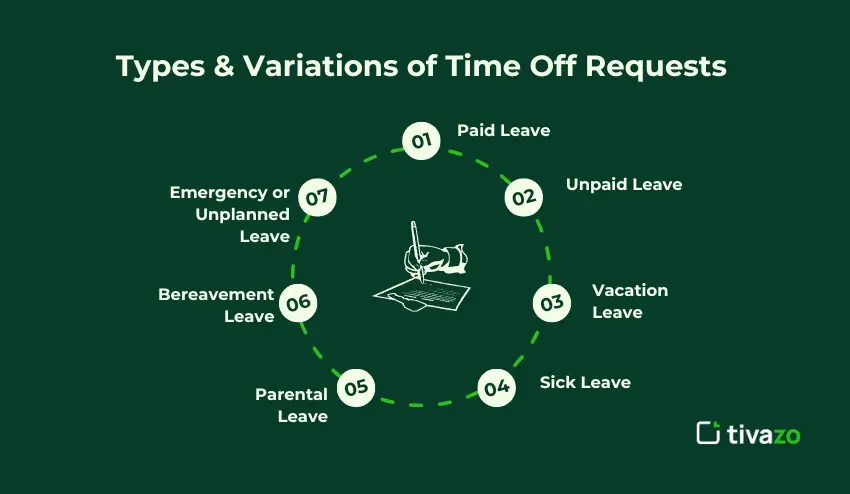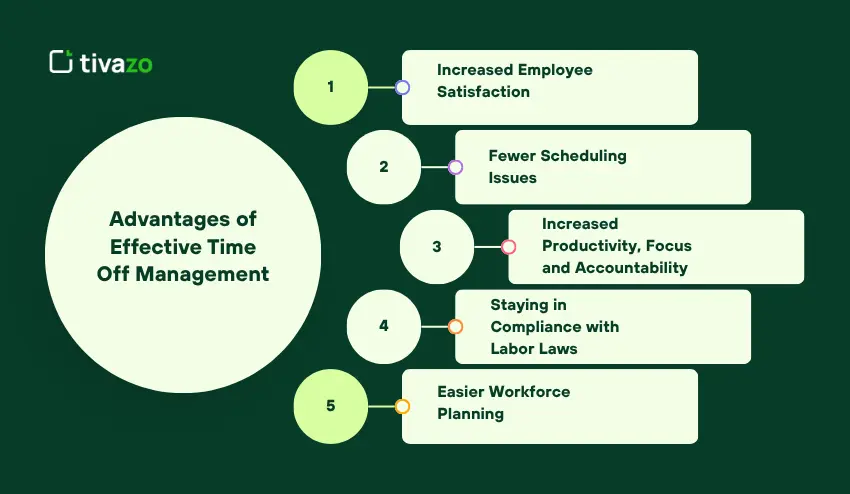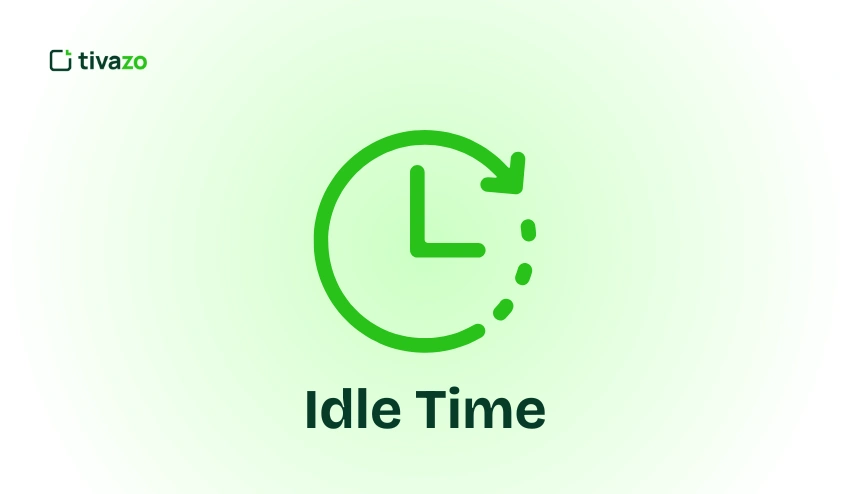A time off request is an official way for an employee to indicate they will not be at work for a specified period of time. This may include vacation, a medical appointment, or an urgent family matter. The intent of the request is to initiate a process that allows the employee and their organization to manage workloads and keep teams on tasks.
In this guide, you will find ways to write, submit, and process time off requests appropriately. You will find sequential recommendations, examples, templates, policy considerations, and real-life examples of requests, everything that can help improve the process for employees and employers.
Let’s start by defining what a time off request actually is and then work through specific examples so you know what policies apply to your situation.
What Is a Time Off Request?

A time off request is an official communication from an employee to take planned or unplanned time off from work. It’s a mechanism to inform management in advance, allowing work to continue without disruption while employees are able to manage their personal lives.
Most companies will require requests for time off to be submitted in writing (the specific mode varies), whether through an HR system, email, or a form, so they can accurately change schedules and payroll. It is important to submit requests in writing because it helps avoid misunderstandings, balance company workloads, and ensure fairness and consistency for employees.
In addition, requests for time off are not just for long vacations or even anything classified as time off. They can be:
- Paid Time Off (PTO): Vacations, personal days, or any paid leave per company policy.
- Unpaid leave: Days of non-pay for personal reasons.
- Sick leave: Days taken off for illnesses or recoveries.
- Parental leave: Days taken for parental care of a child.
- Emergency leave: Unforeseen events (family emergencies, natural disasters, etc.) where an employee must take time off.
All types will vary, and all types may require different documentation and notice, which is why it is important to know the specific policies for your company before requesting time away.
Types & Variations of Time Off Requests
There are multiple types depending on the employee’s situation and the policies of your organization. Knowing these types will help ensure you make the appropriate request and follow the correct process.

1. Paid Leave
Paid leave is also commonly referred to as PTO (paid time off). Paid leave covers time away from work for vacations, personal days, sick days, and other absences. Any form of PTO means the employee is still earning their regular salary from the organization. In general, organizations account for PTO time in a yearly accrual method, which must be carefully tracked.
2. Unpaid Leave
Unpaid leave is an approved time away from work; however, the employee is not paid during this time. Common use cases are for one using their PTO prior to; or for personal use of time away from work. It needs to be clearly articulated the request is for unpaid time away from the workplace and will affect their benefits during their time away.
3. Vacation Leave
Planned time away from work for leisure, travel, or personal activities. Typically, requests for vacation time is made in advance for managers’ coverage and planning.
4. Sick Leave
Time away from work is due to a medical or personal health-related issue (ex. illnesses). Again, some organizations may require a doctor’s note for an extended time away from the workplace.
5. Parental Leave
Taking time off from work for new parents to care for a child. Examples of this type of leave include maternity leave, paternity leave, or leave for adoption. Policies may differ by country or company.
6. Bereavement Leave
Taking time off from work for family members’ responsibilities and/or grieving responsibilities after someone has passed who is a family member or close friend. In general, companies will have a formal policy that allows a few days of paid leave for a specific number of days after the person’s passing.
7. Emergency or Unplanned Leave
Time off from work due to sudden or emergency situations such as an accident, natural disaster, or family situation. These emergencies are often considered emergency situations and are communicated quickly, while also requiring post-approval for documentation.
How Far in Advance Should Employees Submit a Time Off Request?
Not understanding the submission dates for a time off request can change the outcome from approved to denied. Most companies have policies in place to help with planning, scheduling, and minimizing the disruption of time away from work.
Typical Length of Notice
- Vacation leave is usually requested 2-4 weeks in advance. If you are going to take a long vacation, you should plan on submitting your request and informing your manager even further in advance.
- Sick leave or failing ability to work. Will typically just require immediate notification of the illness, shorter lengths of time. Short-term (a few days) often involves an informal notification. Longer medical leave (often requires documentation.
- Parental leave and bereavement leave policies vary, but asking as early as possible is better than being on short notice.
Elements of Timing
- The size of the organization, larger organizations tend to require longer notice for work planning vs smaller organizations.
- The responsibilities of the employee’s role, for example: critical roles or project based roles that require longer notice dates of time away from work.
- Time of year, high demand times of the year. Time of year can greatly reduce an employee’s ability to take time off.
Suggestions for Employees
- As soon as you know the dates for your time off, submit the request.
- If possible, include your intended plans for coverage.
- Be sure to confirm how to submit the time off request (email submission, HR portal, printed document).
Example: If an employee wants wanting vacation from July 10-20th and submits a time off request in mid-June, the manager will have at least 2 weeks to manage coverage for leaving on vacation. (before clipping the week off).
How to Craft & Submit a Time Off Request (Step-by-Step for Employees)
A professionally written time off request can increase approval chances and reduce miscommunication. A step-by-step guide for employees are below:
1. Include The Important Information
Always include the dates you will be away, the reason for the absence (if applicable), and any person(s) or projects that may need coverage in your absence.
2. Use the Appropriate Format
Comply with company policy in relation to submitting your request. Submitting it on an HR form or by email would be most appropriate. Often, using a digital format allows for easier leave tracking.
3. Provide a Coverage Plan
Mention who is committed to the work or how the work will be operated in your absence. Having done so shows responsibility, maturity and consideration.
4. Remain Professional and Courteous
Use a polite and professional tone, do not use unprofessional language. Be concise but clear, for example:
“I would like to request time off from September 10–15 for personal reasons. I have spoken to Jane about covering my weekly reports during that time. Please let me know if you have any further questions.“
5. Request in Advance
Giving your manager appropriate time to evaluate your request, especially during times of peak workloads or long lengths of leave, is not only thoughtful, but also most effective in avoiding the chance of both you and a colleague to request the same time off request.
6. Do Follow-Up
If you do not get a response out the requested leave within an appropriate time frame, a follow-up lets your supervisor know to confirm your time away.
Can An Employer Deny A Time Off Request Without A Reason?
Yes, with many employers, an employer can deny a time off request without a reason, assuming company policy and applicable law permit it. While it is advisable for employers to be as transparent as possible with employees to build trust and limit misunderstandings, the obligation to explain a denial may not exist.
Top Reasons for Denials
- Schedule Conflicts: Where multiple employees have requested the same time off, especially during a busy period.
- Business Reasons: When it is a busy time in business, there is a major project due, or it may not be advisable to have too many employees away during that time.
- Policy: Employees do not have enough leave time accrued or have requested time off in violation of the company policy.
Best Practices for Employers
- If you deny a time off request always try and be courteous and responsive and deny the request as soon as possible.
- If possible, you may want to offer another time off request or partial time off.
- If you deny time requests, consider keeping track of them as a matter of escalation, for reasonable communication and coordination with the employer.
For example, an employee requesting off from December 20–24 while the company has a deadline-driven project during this time. The manager can decline the request, but she should suggest different days off, like December 27–31.
This is helpful because, as the employee, you can self-manage your expectations and thus know how to plan accordingly, while the manager is being fair in respecting employee leave requests, yet also keeping the business running.
Creating a Fair Time Off Request Policy
Having a clear and fair policy on time off requests creates a sense of consistency, openness, and trust in the relations between the employees and the management. It sets clear expectations to the employees, sets accountability that may help avoid conflicts, and helps the teams to concentrate on planning effectively.
The Major Components of a Fair Policy.
- Eligibility and Types of Leave: Determine who is eligible to make leave requests, and what sort of leave will be available (paid, unpaid, sick, parental, etc.)
- Submission Procedures: How and when do we submit, and are there any minimum notice periods.
- Approval Procedures: How the request is going to be assessed, how the request is going to be notified in the event of a conflict, and how quickly a request will be responded to once it has been submitted.
- Communication: Specify a time within which the approved and denied requests will be notified.
- Documentation: Specify that some forms of leave will have to be proved (i.e. doctor note).
Other Things to Be Taken into Account
- Have a written and accessible policy that is visible to all employees.
- Ensure that the managers are able to use the aspects of policy fairly to ensure that favoritism is not experienced.
- Periodically review the policy to be able to comply with the law and to address organizational and employee needs.
How Managers & Organizations Should Handle Time Off Requests
Time off requests are critical to effective management in order to sustain productivity, equity and job satisfaction. When organizations are systematic in the way they deal with requests, this minimizes the conflict and facilitates smooth operations.
- Develop a Clean Approval Process.
Managers must have specific standards of approving requests. This involves taking into account the staffing, project deadlines and equity in the team members. Overlapping requests are to be managed openly, usually first come, first serve or seniority based on the policy of the company. - Use Technology & Tools
The management of leave requests is made easier with the help of HR software, digital calendars, and automated workflows. BambooHR, Homebase or When I Work are some of the tools that enable employees to make requests via the internet, and managers to approve, monitor and report on leave effectively. - Share Decisions in a Timely manner.
The employees are supposed to be responded to in time. Delays may cause frustration and problems in planning. Trust is preserved through clear communication in approvals, denials, or other suggestions. - Realistic Case Study
One of the mid-sized companies installed an HR management tool to monitor all the leave of the employees. Prior to the tool, 25 percent of requests were not handled or delayed. Upon adoption, approval turnaround increased by 40 and schedule conflicts reduced by 30. The process was found to be more satisfying to employees.
Tools & Templates You Can Use
The right tools and templates can make the time off request process less cumbersome for employees and managers; the right tools save time, alleviate errors, and improve workflow engagement with time management.
1. Time Off Request Form Templates
- Simple templates that are ready to go in Google Docs, word, or PDF format.
- On these templates, include fields for the employee’s name, dates of leave, type of leave, reason for leave, and approval signature.
- These templates can then are easily and quickly downloaded, filled-in, and submitted to HR or managers for approval and/or processing.
2. HR Software and Apps
- BambooHR- Tracks PTO, Sick Leave, and has automated notifications for approval to employees.
- Homebase- Employee scheduling as well as leave management.
- When I Work- A great way to plan shifts and track leave.
3. Calendar Integration Tools
- Use approved leave requests to sync respective calendars so teams can avoid conflicts.
- Examples: Google Calendar, Calendar Outlook, or company computer intranet scheduling tools.
Tips for Using Tools Effectively
- Use tools that can be easily integrated into existing workflows.
- Training employees on how to submit requests properly is great practice to avoid confusion.
- It’s always wise to keep a digital paper trail for compliance and/or audits.
Advantages of Effective Time Off Management
Effective time off management creates advantages for everyone in the organization, including employees, teams, and management. It creates balance and reduces stress, and increases performance within the organization.

1. Increased Employee Satisfaction
When requests for time off are processed equitably and in a timely manner, employees feel respected and valued for their contributions. This builds trust and employee morale, ultimately leading to greater loyalty and engagement.
2. Fewer Scheduling Issues
Successive tracking of time off requests, electronic tracking, or a transparent system for teams will eliminate overlapping requests for time off, which will ensure more thorough coverage. Further, when time off requests can be fulfilled, almost more easily than scheduling who is working, the managers can plan accordingly to limit the work disruption when an employee is out.
3. Increased Productivity, Focus and Accountability
Employees who take time off from work on a regular basis return to the workplace refreshed and focused. Research shows rested employees will be more efficient and creative while experiencing lower levels of burnout.
4. Staying in Compliance with Labor Laws
Careful tracking and applying best practices to manage employee time off, provides a framework for businesses to remain compliant with paid leave laws, and other statutory or local laws regarding employee paid time off, lessening the likelihood or risk of labor disputes, employee payroll issues, or employee legality.
5. Easier Workforce Planning
Centralizing employee time off data and leave information, permit an organization’s human resources teams to compile data, examine trends, forecast staffing requirements for business needs and cycles, and know more accurately what work can be assigned during busy and slow seasons or cycles.
Example:
One retail organization with 200 employees employed a new leave management system to manage their employee time off requests. In three months, the organizational time off conflict was reduced by 50%, and the employee satisfaction survey scores increased by 18%.
Conclusion
Learning to make a time off request is crucial to employees and organizations. Professional, clear, and timely requests contribute to the productivity, lessen scheduling disputes, and build trust between the managers and the staff.
Knowing what kind of leaves are available, making requests in advance, and using appropriate tools and templates, employees can be sure about their ability to organize their time off. The managers enjoy a just and transparent process that ensures smooth running of operations.
The adoption of an effective time off management system helps in boosting morale, eliminating burnout, and aiding in adherence to the company policies and labor laws.




